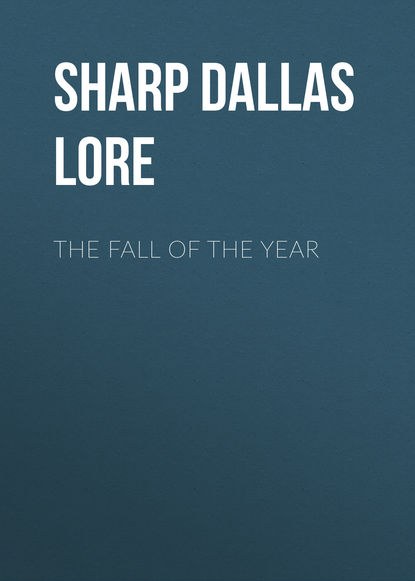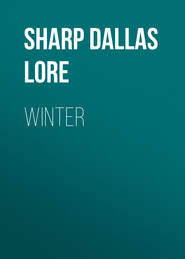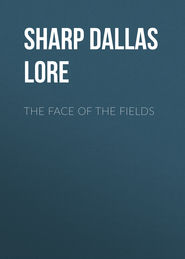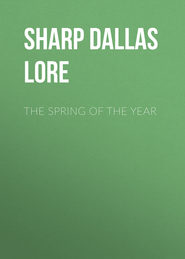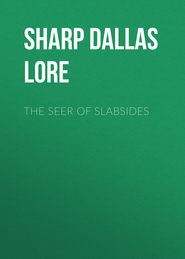По всем вопросам обращайтесь на: info@litportal.ru
(©) 2003-2024.
✖
The Fall of the Year
Настройки чтения
Размер шрифта
Высота строк
Поля
out of doors lies very close about you, as you hurry down a crowded city street: Opportunities for watching the wild things, for seeing and hearing the things of nature, cannot be denied you even in the heart of the city, if you have an eye for such things. Read Bradford Torrey’s “Birds on Boston Common,” or the author’s “Birds from a City Roof” in the volume called “Roof and Meadow.”
CHAPTER XI
TO THE TEACHER
This is a chapter on the large wholesomeness of contact with nature; that even the simple, humble tasks out of doors are attended with a freedom and a naturalness that restore one to his real self by putting him into his original primitive environment and by giving him an original primitive task to do.
Then, too, how good a thing it is to have something alive and responsive to work for – if only a goat or a pig! Take occasion to read to the class Lamb’s essay on Roast Pig – even fifth grade pupils will get a lasting picture from it.
Again – and this is the apparent purpose of the chapter – how impossible it is to go into the woods with anything – a hay-rake – and not find the woods interesting!
FOR THE PUPIL
Page 80
the unabridged dictionary: What does “unabridged” mean?
hay-rig: a simple farm wagon with a “rigging” put on for carting hay.
Page 81
cord wood: wood cut into four-foot lengths to be cut up smaller for burning in the stove. What are the dimensions of a cord of wood?
Page 82
through the cold gray of the maple swamp below you, peers the face of Winter: What does one see in a maple swamp at this time of year that looks like the “face of winter.” Think.
he that gathers leaves for his pig spreads a blanket of down over his own winter bed: How is this meant to be taken?
round at the barn: It is a common custom with farmers to make this nightly round in order to see that the stock is safe for the night. Were you ever in a barn at night where the horses were still munching hay, and the cattle rattling their stanchions and horns? Recall the picture in Whittier’s “Snow-Bound.”
Page 83
diameters: the unit of measure in the “field” or the lens of the microscope, equivalent to “times.”
white-footed wood mouse: Text should read or wood mouse. There are other wood mice, but Whitefoot is known as the wood mouse.
gives at the touch: an idiom, meaning moves back, gives way.
red-backed salamander: very common under stones; his scientific name is Plethodon erythronolus.
His “red” salamander: Read chapter V in “Pepacton,” by Burroughs. His salamander is the red triton, Spelerpes ruber.
Page 84
dull ears: Our ears are dulled by the loud and ceaseless noises of our city life, so that we cannot hear the small voices of nature that doubtless many of the wild creatures are capable of hearing.
tiny tree-frog, Pickering’s hyla: the one who peeps so shrill from the meadows in spring.
“skirl”: a Scotch term; see “Tam O’Shanter,” by Burns: “He screwed the pipes and gart them skirl.”
bunches of Christmas fern: Gathered all through the winter here in the ledges about Mullein Hill by the florists for floral pieces.
Page 85
yellow-jacket’s nest: one of the Vespa Wasps, Vespa Germanica. Read the first chapter of “Wasps Social and Solitary,” by G. W. and E. G. Peckham.
Page 86
long-tusked boar of the forest: The wild boar, the ancestor of our domestic pigs is still to be found in the great game preserves in European forests; in this country only in zoölogical gardens.
live in a pen: How might one, though living in a big modern house, well furnished and ordered, still make a “pen” of it only.
CHAPTER XII
TO THE TEACHER
Notice again that in the three chapters on things to see and do and hear a few of the characteristic sights and sounds and doings have been mentioned. Let the whole teaching of these three chapters be to quicken the pupil to look for and listen for the dominant, characteristic sights and sounds of the season, as he must be trained to look for and listen for the characteristic notes and actions of individual things – birds, animals, flowers. If, for instance, his eye catches the galloping, waving motion of the woodpecker’s flight, if his ear is trained to distinguish the rappings of the same bird on a hollow limb or resonant rail, then the pupil knows that bird and has clues to what is strange in his plumage, his anatomy, his habits, his family traits.
The world outdoors is all a confusion until we know how to separate and distinguish things; and there is no better training for this than to get in the way of looking and listening for what is characteristic.
Each locality differs, however, to some extent in its wild life; so that some of the sounds in this chapter may need to have others substituted to meet those differences. Remember that you are the teacher, not the book. The book is but a suggestion. You begin where it leaves off; you fill out where it is lacking. A good book is a very good thing; but a good teacher is a very much better thing.
FOR THE PUPIL
Now do not stuff cotton in your ears as soon as you have heard these ten sounds; or, what amounts to the same thing, do not stop listening. If you do only what the book says and nothing else, learn just the day’s lesson and nothing more, your teacher may think you a very “good scholar,” but I will tell you that you are a poor student of nature. The woods are full of sounds – voices, songs, whisperings – that are to be heard when none of these ten are speaking.
Pages 88 and 90
hear their piercing whistle: the husky yap, yap, yap of the fox: It is usually the young hawks in the fall that whistle, as it is usually the young foxes in the summer and fall that bark.
Page 91
“Heaped in the hollows of the grove, the autumn leaves lie dead;
They rustle to the eddying gust, and to the rabbit’s tread.”
“The robin and the wren are flown, but from the shrub the jay,
And from the wood-top calls the crow through all the gloomy day.”
Study this whole poem (“The Death of the Flowers,” by Bryant) for its excellent natural history. Could the poet have written it had he been ignorant of nature? Can you appreciate it all unless you, too, have heard these sounds, so that the poem can sound them again to you as you read? Nature is not only interesting for herself; but also absolutely necessary for you to know if you would know and love poetry.
the one with a kind of warning in its shrill, half-plaintive cry; the other with a message slow and solemn: What is the warning, would you say, in the scream of the jay? the solemn message in the caw of the crow?
Page 94
cave days: Cave days mean those prehistoric times in the history of man, when he lived in caves and subsisted almost wholly upon the flesh of wild animals killed with his rude stone weapons.
Page 95





